
College Year in Athens has multiple student trips throughout the semester to different historical and archaeological sites. These trips included Delphi (which occurred during my first week in Greece), the Peloponnese region, and the island of Crete. I recently got back from Crete and would love to tell you all I saw and took part of.
Getting to Crete
Getting to Crete was a really interesting experience! For the Fall Semester, we all travel via ferry, or what many would see as a large cruise liner. I have never been on a ship that large, so arriving at the port and viewing it was an experience. Semis were loaded into the bottom of the ferry as we filed into the upper floors of the boat. It was an interesting sight to see, but the more I thought about it the more it made sense. A lot of people live on the island and things need to reach them, making ferry transportation an easy answer.
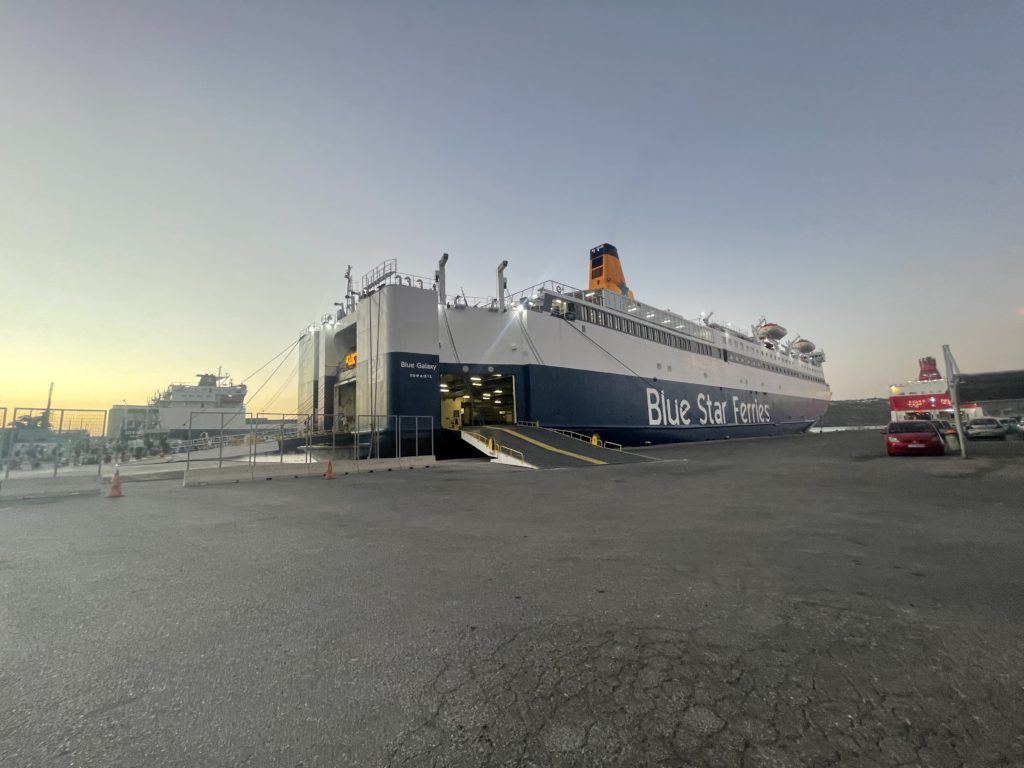
Everyone in the program split up in rooms around the boat with other students. As soon as we got our room keys and placed our luggage in our rooms, we were free to do anything. I ended up getting food with friends and playing card games until I returned to the cabin for the night. My room was located on a lower floor in the ship and the boat’s movements rocked me to sleep. We had an early wakeup call the next morning with 7 a.m. breakfast. After, the program split into smaller groups, loaded onto buses, and had an hour’s journey to our first destination on Crete: Knossos (Κνωσός).
Knossos
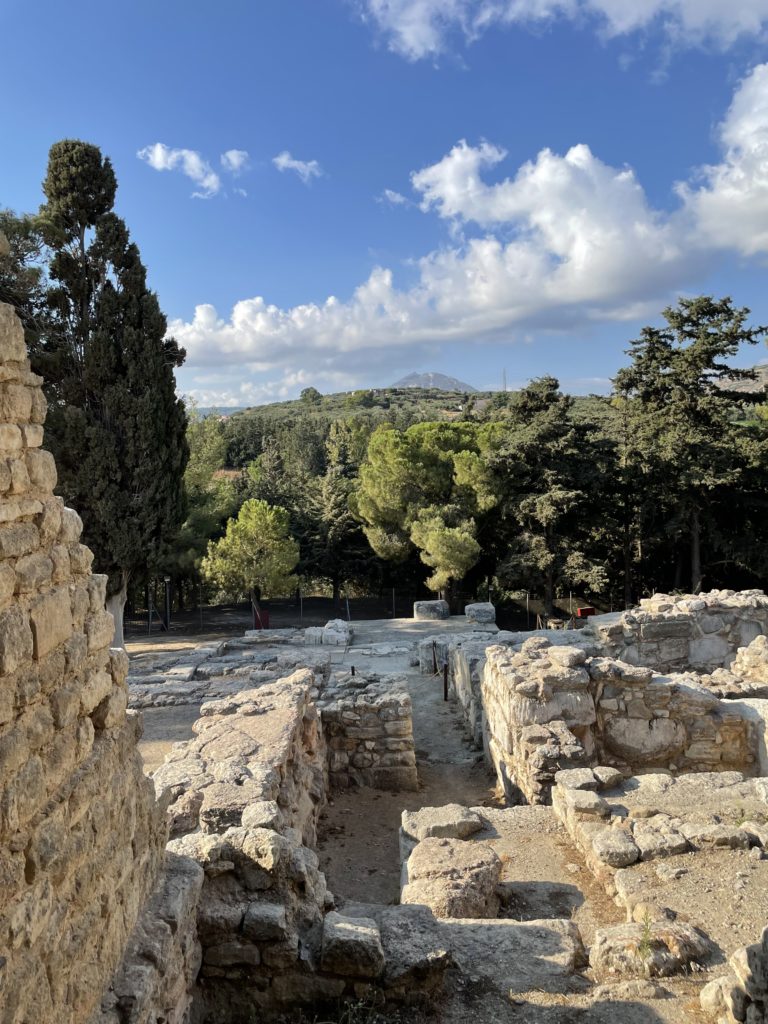
Knossos is an excavation site that continues to have controversy surrounding it today. What we looked at was the Palace at Knossos, with its origins being around 2,000 BCE. The site was excavated by Sir Arthur Evans between 1900-1935, where many different important discoveries took place. While Evans did a lot of good, there were things done to the site that continue to cause issues, which is what my group focused on while there.
One of the first issues brought up was the concept of conservation. If you have taken any art or archaeology class, I am guessing you might have heard about the topic. There is a remaining debate on how sites and artifacts should be preserved: if they should be rebuilt or left as discovered. This issue is obvious at Knossos. While Evans excavated the site, he would rebuild some of the buildings in his image by using concrete. While the site looks well-preserved, as if we are seeing what things originally looked like, most is not accurate. Some artifacts are almost completely destroyed, making it almost impossible to know what they actually looked like. Evans and his group of painters and sculptors and recreated them in their own visions. This is seen with the rooms discovered, such as one being labeled the “Throne Room” with little understanding of the room’s use.
While it might sound like I disliked the site, I enjoyed the trip. The scenery around the site was beautiful as it was located at the top of a small mountain. The site itself was also fun to look at, especially being led by a group of professors who easily pointed out to us what was original and what Evans incorporated into the site. It was an experience I would never want to change.
Trip to a Leper Colony
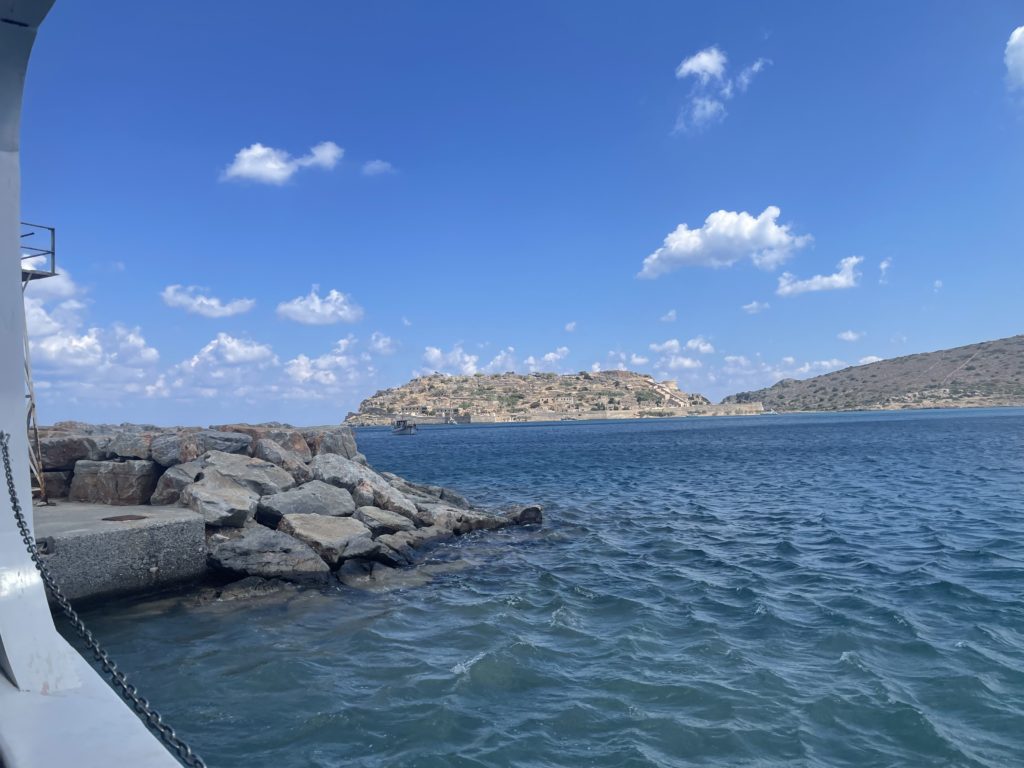
Now I know, this title might seem unusual or worrying, but it was something that I once again really enjoyed! After Knossos, we drove to the small coastal town of Plaka (Πλάκα) and took a ferry to Spinalonga (Σπιναλόγκα), an island known for holding a former leper colony. The island was abandoned by the mid-1900’s with the cure of leprosy and illness was no longer a life-sentence. All that remains are the original buildings for those living there, a small church, and a walkway leading to a cemetery towards the top of the island.
While there, our professors depicted what life was on the island. This was done through sharing true stories of limited food and getting help from family living in Plaka. It was definitely a sad and hopeless feeling, but one that is necessary to understand. This is why we do these trips: to understand the history of Crete and what life was for those living here.
Heraklion
After viewing Knossos and the colony, we traveled to Heraklion (Ηράκλειο), where we stayed for three days and continued looking at historical sites. We were located at multiple hotels around the center of the city that contained beautiful views from each hotel room. There, we were close to a lot of stores, many wonderful food locations, and an amazing view of the sea. We had classes at different historical sites around the area and time to go and experience the town.
My group’s focus was on viewing museums and religious buildings, including the Archaeological Museum of Heraklion, and the Arkadi Monastery. The first trip was to a previous church, later reconstructed into a small museum, called the Aikaterini Museum of Byzantine Art. The building contained artwork from the Byzantine Empire that had artistic connections to the Renaissance Era occurring in Rome. As an art major, I had an absolute blast viewing this art. This was a religious art period that I knew little to nothing about, so it was a fun experience.
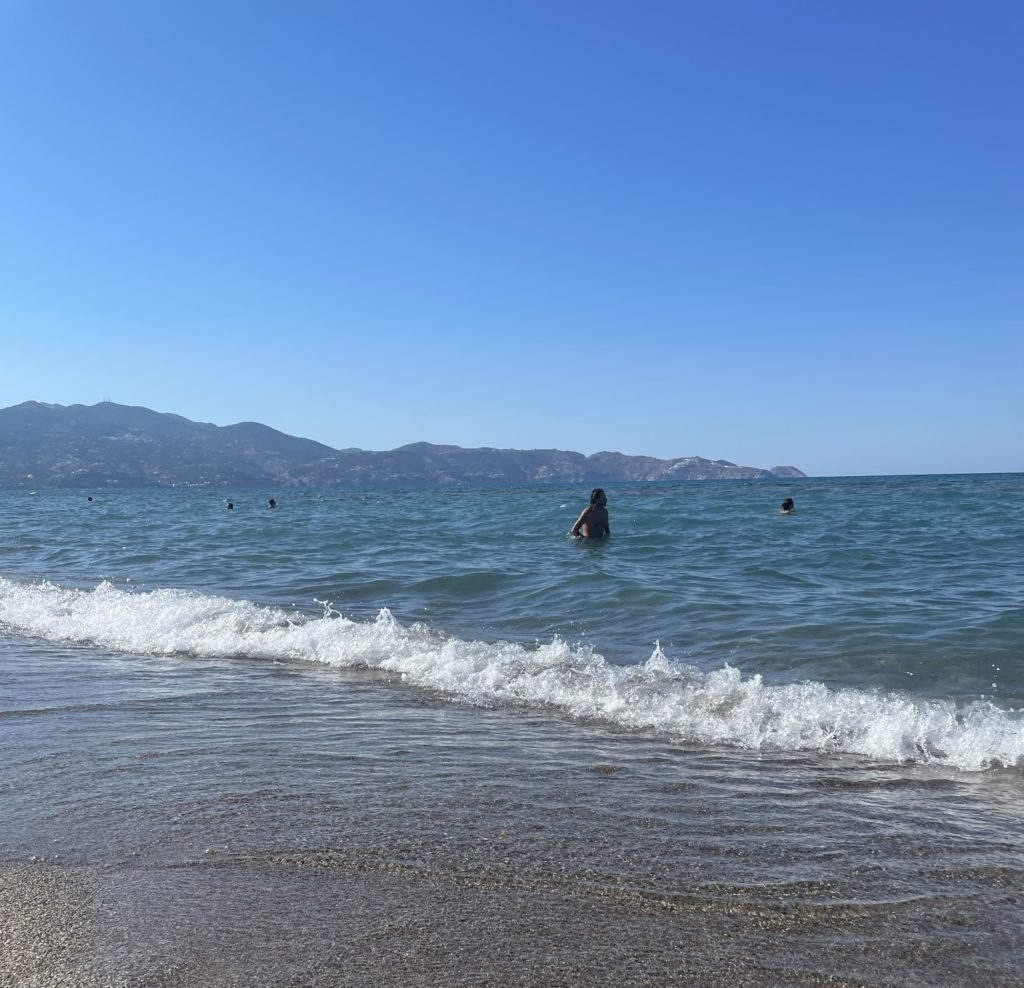
During my free time in the city, myself and a couple of friends took a taxi to a nearby beach. Let me just start off by saying that this was officially my first time swimming in the ocean. Crazy, right? I haven’t been to the beaches in Athens yet and I only stayed on the shore during the Delphi trip. Let me just say, swimming in the ocean was an amazing feeling! Unlike the Great Lakes around Michigan, the water was warmer, a beautiful blue and turquoise color, and extremely salty! I swam for a long time with my friends and hung around on shore. We stayed for a few hours and soaked in the sun until we decided to return to our hotel.
During my other free periods while in Heraklion, I would go sightseeing and try new foods. We were located towards the center of the city which brought many different types of food and locations to eat. One of my favorite foods came from a creperie located in the town’s square. There, my friends and I got amazing food and a beautiful outdoor seating venue next to a large water fountain.
Arkadi, Rethymno, and Chania
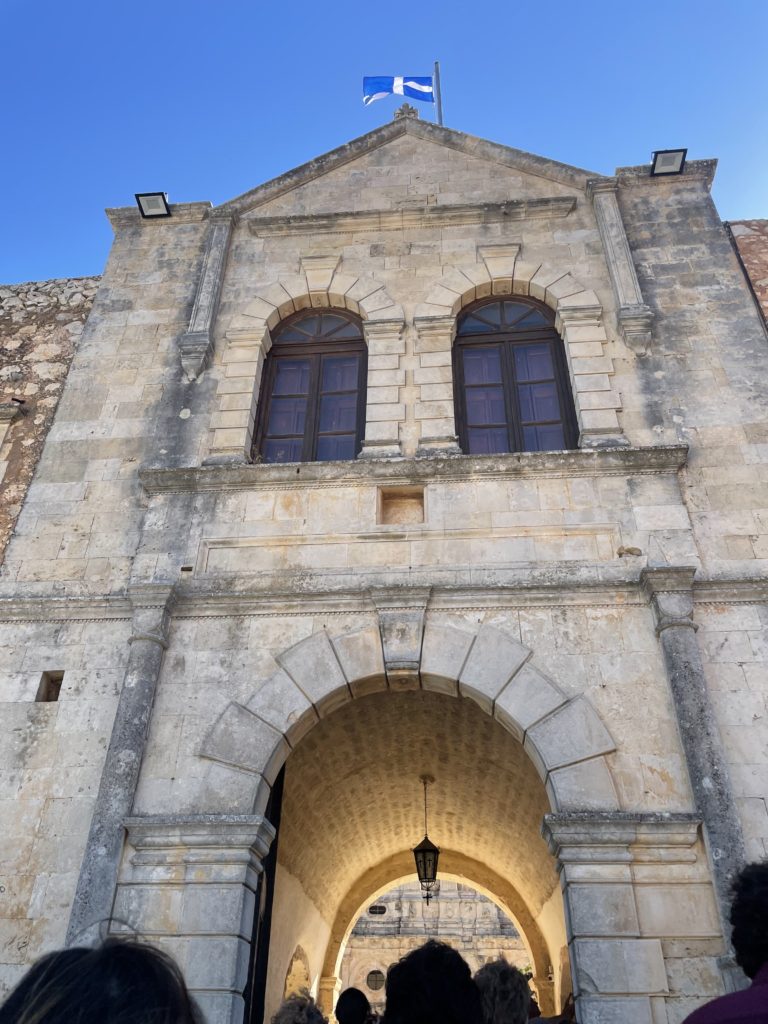
On Friday, my group woke up early, packed our bags, and left the hotel quickly. Our destinations included the Arkadi Monastery and a contemporary museum before our nighttime destination in the large town of Chania (Χανιά).
Every group stopped at the Arkadi Monastery, an old and still active monastery with a lengthy history. The monastery has a square exterior, containing rooms for current monks who live there. On the interior is a small church, where we were able to enter and view the building’s structure and artwork. We then walked to one of the back buildings and learned about a battle that took place there. Some of the devastation remains on the ground today, left as a reminder of the battle fought in the area.
Our trip took us to Rethymno (Ρέθυμνο) next. This was a small town where my group walked through to view the Museum of Contemporary Art of Crete. The artwork that we saw correlated to how artists in Crete felt during the initial Covid-19 Pandemic. I found it enjoyable to view artwork inspired by recent events in newer styles that I hadn’t previously observed. Not much time was spent in Rethymno. After the museum, we quickly ate and continued on our journey to the final town of the day: Chania.
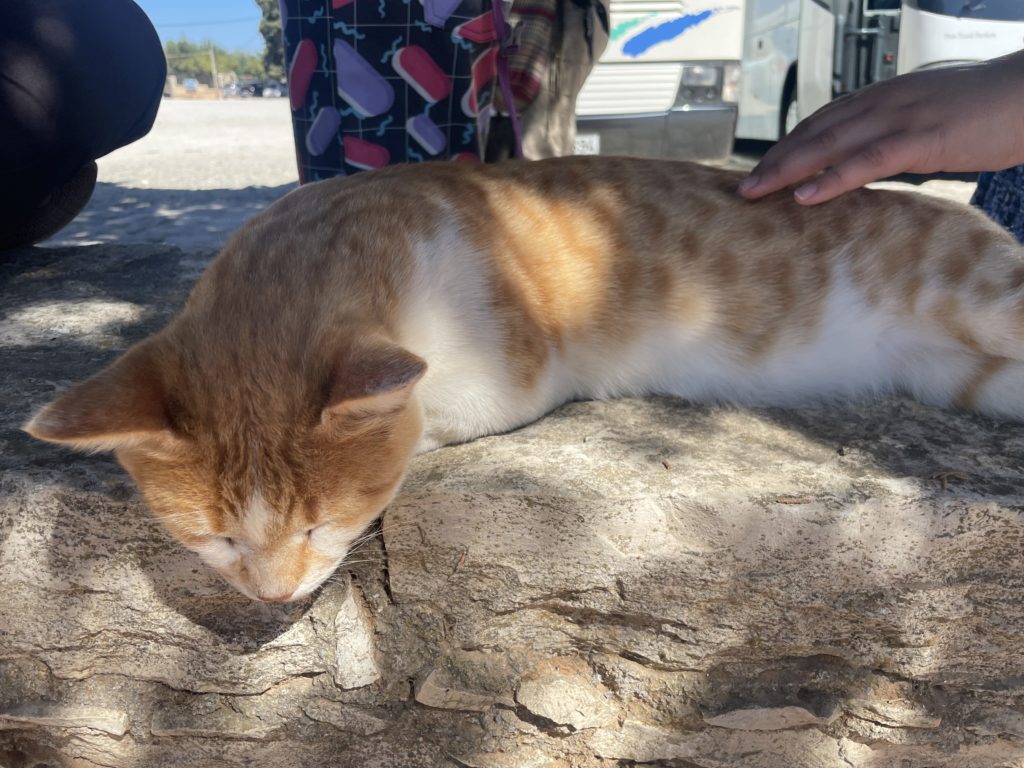
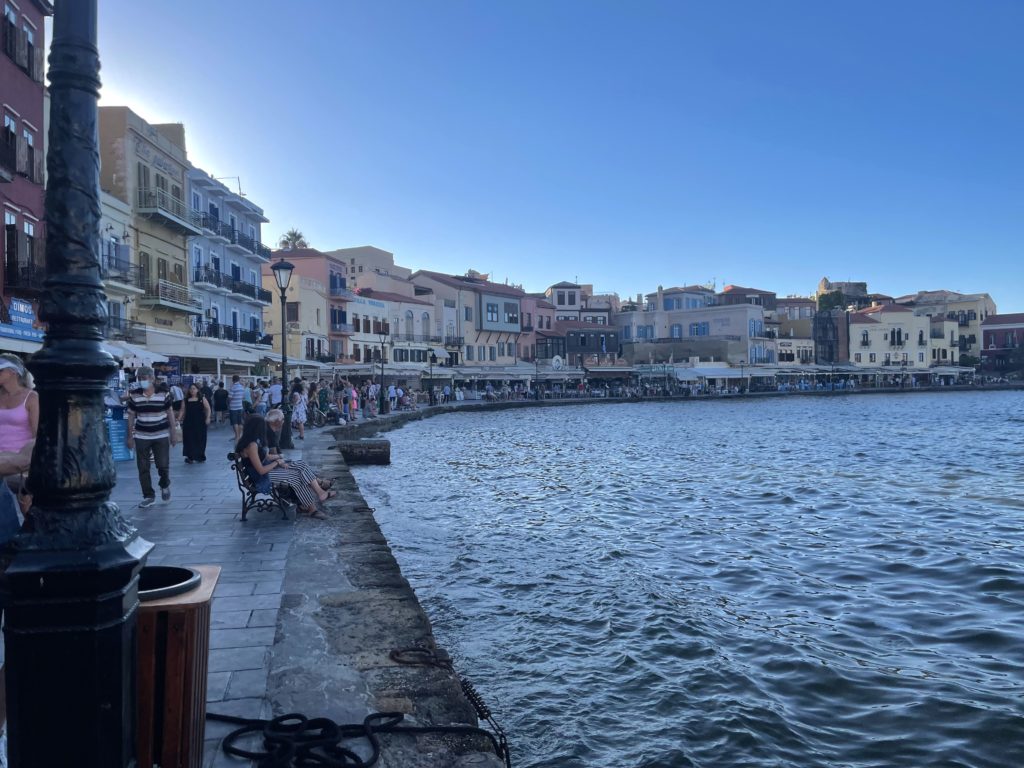
Afterwards, we traveled to Chania for our next overnight experience in Crete. Chania is a beautiful sea-side town with a large harbor where you can sit by the water. After touring the Etz Hayyim Syanagogue, one of the few synagogues on Crete, I took a walk around the village and saw some amazing sights, such as colorful buildings with a wonderful view of the ocean and the amazing sunset occurring over the water. I took my time on my walk, taking pictures with my camera as I went, and eventually took a break right next to the water. The entire experience was tranquil and relaxing, which was a nice thing to feel during such a busy trip!
A Hike in Sougia Village
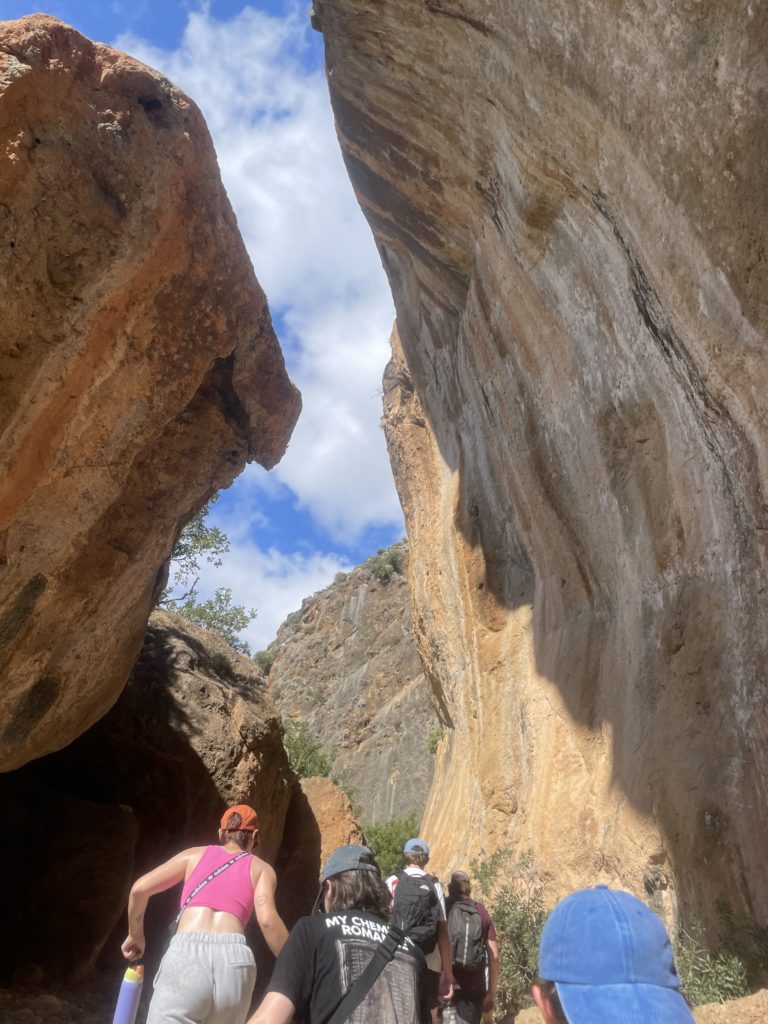
We left Chania early in the morning and drove a few hours to Sougia Village, a small area with amazing rock beaches, waterfalls, and a hiking trail to the top of one of the nearby mountains. Most of the CYA group took part in the hike, myself included!
The hike was awesome, but to be honest – I was EXHAUSTED by it. The trail was only 4.4 kilometers to and from where we started, but I found it very tiring. I think that the fatigue from the week, along with the steep incline during the hike, affected me. Even with this, the pain and tiredness I felt was worth it once we all made it to the top. The top of the mountain revealed a beautiful outlook to the sea with a waterfall as well. Being able to see all of this was worth it and I would not change a thing!
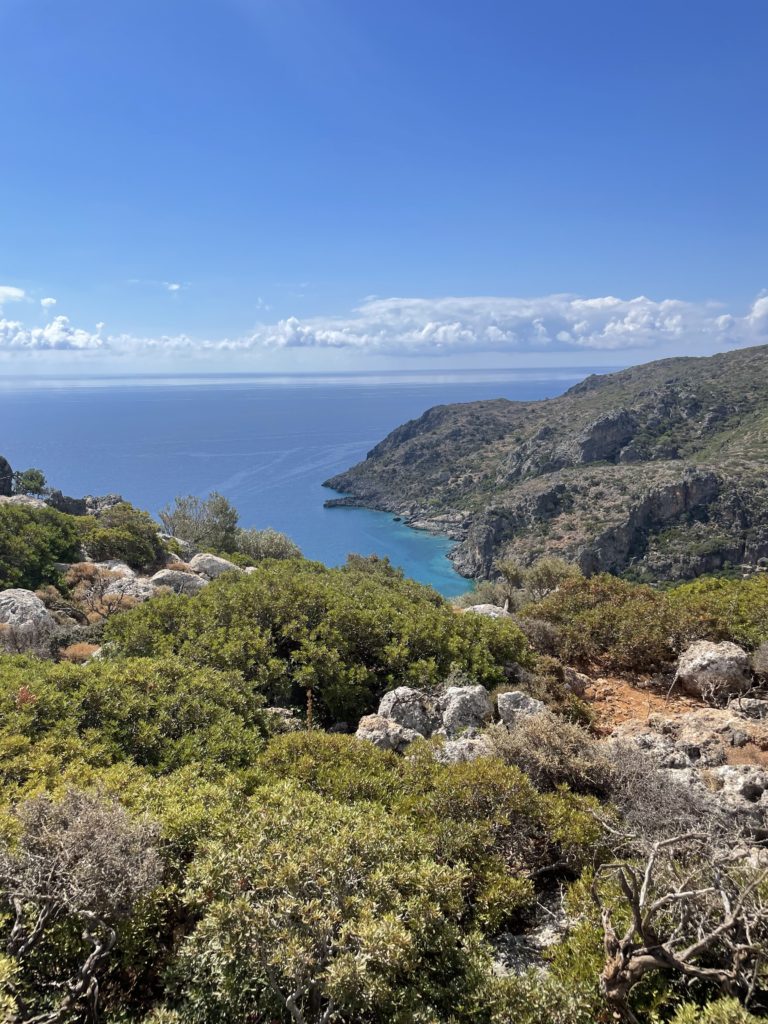
Looking Back
We all left Sougia later that day and returned to Athens by ferry. We arrived early the next day and saw the sun rise over the city as we rode back to CYA. After getting back to my apartment and taking a long and necessary nap, I thought back to the trip, what I experienced, and how different it is to Mainland Greece. It felt weird to be back in a large city with people all around you when I had just experienced something entirely different. The trip brought feelings of missing home, but also excitement for the change. It made me realize how different things are here and to look more at those differences. I absolutely loved Crete and I hope one day I can go back and travel around the island once more!

